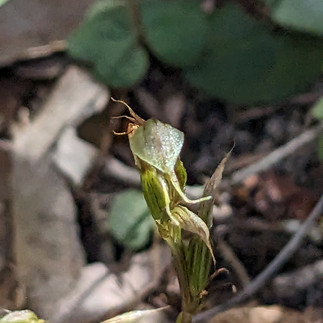Connecting To Native Orchids
- Isis
- Dec 21, 2024
- 3 min read
Updated: Mar 1

Australian native orchids are truly some of our hidden plant gems, often overlooked as we stroll through the stunning landscapes of our diverse and vibrant land. These remarkable plants exhibit an astonishing variety of shapes, colors, and sizes, showcasing the incredible biodiversity that Australia has to offer. The beauty of these orchids lies not only in their visual appeal but also in their unique adaptations to the various environments in which they thrive.
They bloom in different seasons, with some species flowering in the cooler months while others burst into color during the warmer periods, creating a constantly changing tapestry of floral displays throughout the year. These orchids can be found in a range of habitats, from the coastal regions to the arid outback, and from the lush rainforests to the dry woodlands, each species adapted to its specific environment.
For instance, the strikingly beautiful Dendrobium species can be discovered clinging to the trunks of trees in moist, shaded areas, while the hardy Caladenia orchids often emerge from the ground in more open, sunlit spaces. Moreover, the intricate relationships these orchids have with local wildlife, such as pollinators like bees, birds, and even insects, play a crucial role in their reproduction and survival.

The fascinating mechanisms they employ to attract these pollinators often include vibrant colors, enticing scents, and unique flower shapes that mimic other flora or even fauna, ensuring their continued existence in the wild. As we traverse the breathtaking landscapes of Australia, it is essential to take a moment to appreciate these exquisite native orchids, for they are not just mere plants but rather a vital part of our ecological heritage, contributing to the overall health and balance of our natural ecosystems. By fostering a greater awareness of these hidden gems, we can help to ensure their preservation for future generations to admire and cherish.
Let's concentrate on the native orchids in NSW and ACT. Given their abundance, we will explore native orchid species from across the country in our native orchid blog series. In NSW and ACT, orchids can be categorized into three main groups: terrestrial or ground orchids, epiphytes and lithophytes—which grow on trees or rocks—and the beautiful climbing orchids that root in the ground but can ascend to great heights when they attach to a tree for support.
Most orchids in NSW and ACT are typically terrestrial. Interestingly, lithophytes and epiphytes are evergreen, while climbing orchids and almost all terrestrial orchids are deciduous and seasonal. They have a dormant period where the rhizomes or tubers remain in the soil, followed by the emergence of a new leaf, flower, and fruit.
Pollinating orchids is an interesting process that highlights the intricate relationships between plants and their pollinators, showcasing the remarkable adaptations that both have evolved over time. Orchids, belonging to one of the largest and most diverse families of flowering plants, have developed unique and specialized mechanisms for attracting specific pollinators, which can include various insects, birds, and even mammals.
This fascinating interplay begins with the orchid's intricate floral structures, which often mimic the appearance or scent of potential mates for pollinators, thereby enhancing the likelihood of successful pollination. The flowers of orchids can exhibit a stunning array of colors, shapes, and sizes, each designed to appeal to particular species of pollinators, ensuring that the transfer of pollen occurs effectively. In addition to visual cues, many orchids also produce alluring fragrances that can attract pollinators from considerable distances. For instance, some species release scents that resemble those of female insects, tricking male insects into visiting the flower, thereby facilitating the transfer of pollen as they search for mates.

This strategy not only ensures the continuation of the orchid species but also plays a crucial role in the broader ecosystem, as it supports the populations of the pollinators themselves. The process of pollination in orchids is not just a simple exchange; it is a complex interaction that can vary significantly from one species to another. Some orchids have evolved to be self-pollinating, while others rely entirely on external agents for reproduction. This diversity in pollination strategies underscores the adaptability of orchids to different environmental conditions and ecological niches. Furthermore, the relationship between orchids and their pollinators can be so specific that the decline of a particular pollinator species can lead to the endangerment of certain orchid species, illustrating the delicate balance of ecosystems.
In summary, the pollination of orchids is a captivating phenomenon that encapsulates the beauty and complexity of nature. It serves as a reminder of the intricate connections that exist within ecosystems and highlights the importance of preserving these relationships for the health of our planet.










Comments